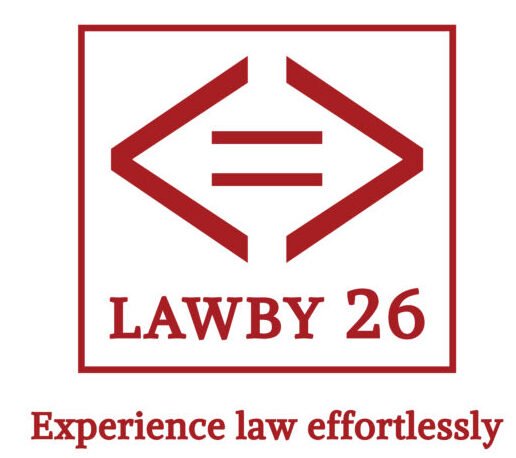Is Euthanasia legal in India?
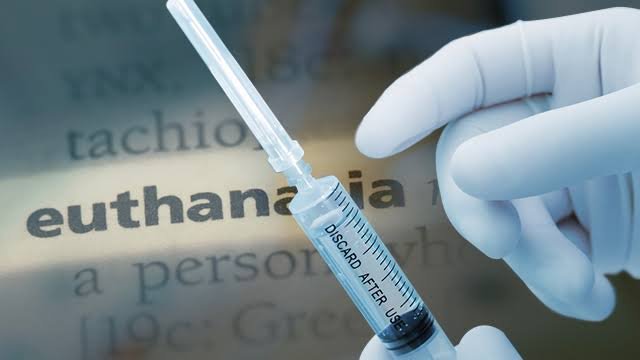
Definition: Euthanasia is defined as the administration of a lethal agent by another person to a patient for the purpose of relieving the patient’s intolerable and incurable suffering. Typically, the physician’s motive is merciful and intended to end suffering. Types of Euthanasia: Euthanasia is performed by physicians and has been further defined as “active” or “passive.” ● Active euthanasia refers to a physician deliberately acting in a way to end a patient’s life. ● Passive euthanasia pertains to withholding or withdrawing treatment necessary to maintain life. Types of Active Euthanasia: ● Voluntary euthanasia is one form of active euthanasia which is performed at the request of the patient. ● Involuntary euthanasia, also known as “mercy killing,” involves taking the life of a patient who has not requested for it, with the intent of relieving his pain and suffering. Legal Status: ● In India, euthanasia is a crime. Section 309 of the Indian Penal Code (IPC) deals with the attempt to commit suicide and Section 306 of the IPC deals with abetment of suicide – both actions are punishable. ● Only those who are brain dead can be taken off life support with the help of family members. ● Likewise, the Honourable Supreme Court, time and again is also of the view that the Right to Life guaranteed by Article 21 of the Constitution does not include the right to die. ● The Court held that Article 21 is a provision guaranteeing protection of life and personal liberty and by no stretch of imagination can the extinction of life be read into it. ● However, various pro-euthanasia organizations such as the Death with Dignity Foundation, keep on fighting for legalization of an individual’s right to choose his own death. Case of Aruna Shanbaug : ● Aruna Shanbaug, who was working as a nurse at KEM Hospital, was assaulted on the night of November 27, 1973 by a ward boy. ● He sodomised Aruna after strangling her with a dog chain. The attack left Aruna blind, paralysed and speechless and she went into a coma from which she has never come out. ● On 16th December 2009, the Supreme Court of India admitted the woman’s plea to end her life. The Supreme Court bench comprising Chief Justice K G Balakrishnan and Justices A K Ganguly and B S Chauhan agreed to examine the merits of the petition and sought responses from the Union Government, Commissioner of Mumbai Police and Dean of KEM Hospital. ● A major development took place in this field on 7 March 2011. The Supreme Court, in a landmark judgment, allowed passive euthanasia. Refusing mercy killing of Aruna Shaunbag, lying in a vegetative state in a Mumbai Hospital for 37 years. ● A two-judge bench laid down a set of tough guidelines under which passive euthanasia can be legalized through a High Court monitored mechanism. ● The Court further stated that parents, spouses, or close relatives of the patient can make such a plea to the High Court. ● The Chief justices of the High Courts, on receipt of such a plea, would constitute a bench to decide it. ● The bench in turn would appoint a Committee of at least three renowned doctors to advise them on the matter.
Vishaka Guidelines against Sexual Harassment at Workplace

Laid down by the Hon’ble Supreme Court in the case of Vishaka and Others Vs. State of Rajasthan and Others Sexual harassment includes such unwelcome sexually determined behaviour (whether directly or by implication) as: a) Physical contact and advances;b) A demand or request for sexual favours;c) Sexually coloured remarks;d) Showing pornography;e) Any other unwelcome physical, verbal or non-verbal conduct of sexual nature.Where any of these acts is committed in circumstances where-under the victim of such conduct has a reasonable apprehension that in relation to the victim’s employment or work whether she is drawing salary, or honorarium or voluntary, whether in government, public or private enterprise such conduct can be humiliating and may constitute a health and safety problem.It is discriminatory for instance when the woman has reasonable grounds to believe that her objection would disadvantage her in connection with her employment or work including recruiting or promotion or when it creates a hostile work environment. Adverse consequences might be visited if the victim does not consent to the conduct in question or raises any objection thereto. Duty of Employer or other responsible persons in work places or other institutions: ● To prevent or deter the commission of acts of sexual harassment, ● To provide the procedures for the resolution, settlement or prosecution of acts, of sexual harassment by taking all steps required. ● Should take appropriate steps to prevent sexual harassment Steps to be taken by employers or persons in charge of workplace whether in public or private sector: ● Express prohibition of sexual harassment as defined above at the work place should be notified, published and circulated in appropriate ways. ● The Rules/Regulations of Government and Public Sector bodies relating to conduct and discipline should include rules/regulations prohibiting sexual harassment and provide for appropriate penalties in such rules against the offender. ● As regards private employers, steps should be taken to include the aforesaid prohibitions in the standing orders under the Industrial Employment (Standing Orders) Act, 1946. ● Appropriate work conditions should be provided in respect of work, leisure, health and hygiene to further ensure that there is no hostile environment towards women at work places and no employee woman should have reasonable grounds to believe that she is disadvantaged in connection with her employment. Complaints Committee: ● Whether or not such conduct constitutes an offence under law or a breach of the service rules, an appropriate Complaint Mechanism should be created in the employer’s organisation for redress of the complaint made by the victim. ● Such a complaint mechanism should ensure time bound treatment of complaints. ● The complaint mechanism, referred to above, should be adequate to provide, where necessary, a Complaints Committee, a special counsellor or other support service, including the maintenance of confidentiality. ● The Complaints Committee should be headed by a woman and not less than half of its members should be women. Further, to prevent the possibility of any undue pressure or influence from senior levels, such Complaints Committee should involve a third party, either NGO or other body who is familiar with the issue of sexual harassment.• The Complaints Committee must make an annual report to the Government department concerned of the complaints and action taken by them. ● The employers and person in charge will also report on the compliance with the aforesaid guidelines including on the reports of the Complaints Committee to the Government department.
Guidelines to be followed in all cases of arrest or detention.
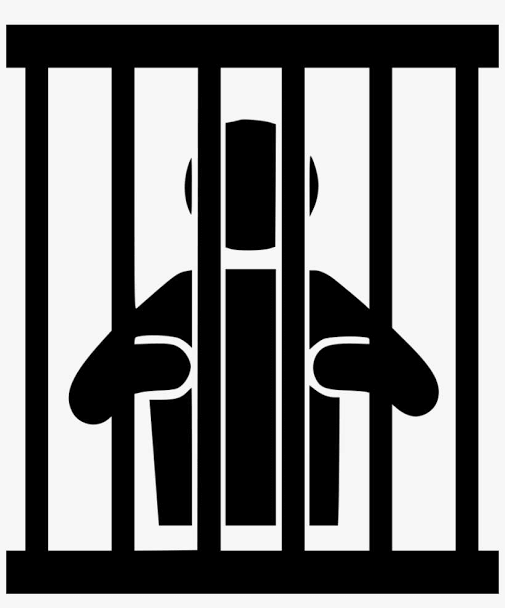
D.K. Basu vs. State of West Bengal (18.12.1996 – SC): MANU/SC/0157/1997. Background: The case was filed to develop a “custody jurisprudence” and formulate modalities for awarding compensation to the victim and/or family members of the victim for atrocities and death caused in police custody and to provide for accountability in cases of lock-up deaths. GUIDELINES:(1) The police personnel carrying out the arrest and handling the interrogation of the arrestee should bear accurate, visible and clear identification and name tags with their designations. The particulars of all such police personnel who handle interrogation of the arrestee must be recorded in a register. (2) That the police officer carrying out the arrest of the arrestee shall prepare a memo of arrest at the time of arrest and such memo shall be attested by at least one witness, who may be either a member of the family of the arrestee or a respectable person of the locality from where the arrest is made. It shall also be counter signed by the arrestee and shall contain the time and date of arrest. (3) A person who has been arrested or detained and is being held in custody in a police station or interrogation center or other lock-up, shall be entitled to have one friend or relative or other person known to him or having interest in his welfare being informed, as soon as practicable, that he has been arrested and is being detained at the particular place, unless the attesting witness of the memo of arrest is himself such a friend or a relative of the arrestee. (4) The time, place of arrest and venue of custody of an arrestee must be notified by the police where the next friend or relative of the arrestee lives outside the district or town through the Legal Aid Organization in the District and the police station of the area concerned telegraphically within a period of 8 to 12 hours after the arrest. (5) The person arrested must be made aware of this right to have someone informed of his arrest or detention as soon as he is put under arrest or is detained. (6) An entry must be made in the diary at the place of detention regarding the arrest of the person which shall also disclose the name of the next friend of the person who has been informed of the arrest and the names and particulars of the police officials in whose custody the arrestee is. (7) The arrestee should, where he so requests, be also examined at the time of his arrest and major and minor injuries, if any present on his/her body, must be recorded at that time. The “Inspection Memo” must be signed both by the arrestee and the police officer effecting the arrest and its copy provided to the arrestee. (8) The arrestee should be subjected to medical examination by a trained doctor every 48 hours during his detention in custody by a doctor on the panel of approved doctors appointed by Director, Health Services of the concerned State or Union Territory. Director, Health Services should prepare such a penal for all Tehsils and Districts as well. (9) Copies of all the documents including the memo of arrest, referred to above, should be sent to the illaqa Magistrate for his record. (10) The arrestee may be permitted to meet his lawyer during interrogation, though not throughout the interrogation. (11) A police control room should be provided at all district and state headquarters, where information regarding the arrest and the place of custody of the arrestee shall be communicated by the officer causing the arrest, within 12 hours of effecting the arrest and at the police control room it should be displayed on a conspicuous notice board.
Is Homosexual Marriage legal in India?
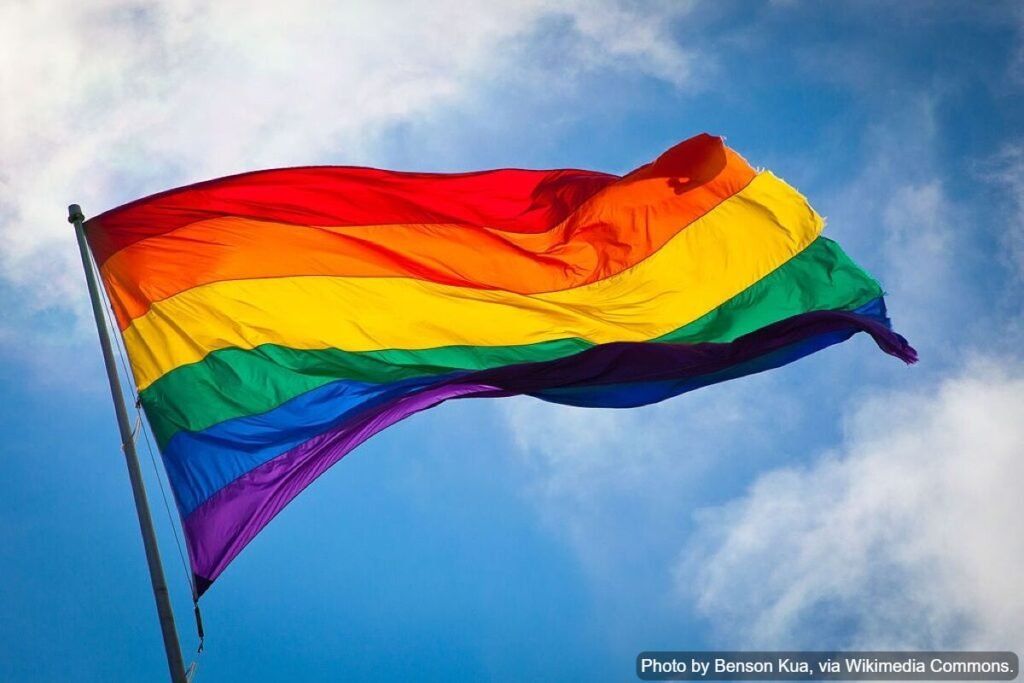
RIGHT TO MARRY: The Supreme Court in its SUO MOTU WRIT PETITION (CRIMINAL) NO. 24 OF 2014, stated that Article 21, deals with the right to life and personal liberty which is an inherent aspect of Article 21 of the Constitution would be the freedom of choice in marriage. In the case of Shakti Vahini v. Union of India , the Court stated that “It has to be sublimely borne in mind that when two adults consensually choose each other as life partners, it is a manifestation of their choice which is recognized under Articles 19 and 21 of the Constitution. Such a right has the sanction of the constitutional law and once that is recognized, the said right needs to be protected…..” SECTION 377 of IPC: The Supreme Court in its landmark judgement in the case of Navjet Singh Johar and others v. Union of India , declared that insofar as Section 377 criminalises 51 consensual sexual acts of adults (i.e., persons above the age of 18 years who are competent to consent) in private, is violative of Articles 14, 15, 19, and 21 of the Constitution. In National Legal Services Authority v. Union of India and others Justice Radhakrishnan, J. stated that Gender identity refers to each person‘s deeply felt internal and individual experience of gender, which may or may not correspond with the sex assigned at birth, including the personal sense of the body which may involve a freely chosen, modification of bodily appearance or functions by medical, surgical or other means and other expressions of gender, including dress, speech and mannerisms. The discrimination on the ground of sex under Articles 15 and 16, therefore, includes discrimination on the ground of gender identity. The expression ―sex used in Articles 15 and 16 is not just limited to biological sex of male or female, but intended to include people who consider themselves to be neither male nor female. The most recent update being the case of Abhijit Iyer Mitra & Ors vs Union of India , petition to recognise same-sex marriages under the Hindu Marriage Act, Special Marriage Act and Foreign Marriage Act. Replying to the same, Solicitor General Tushar Mehta told the Delhi High Court that, “Our legal system and values do not recognise marriage, which is sacramental, between same-sex couples.” Therefore, the law in India does not recognise marriages between homosexuals.
Guidelines for Ex-Gratia Assistance to next of kin of the Deceased by Covid-19
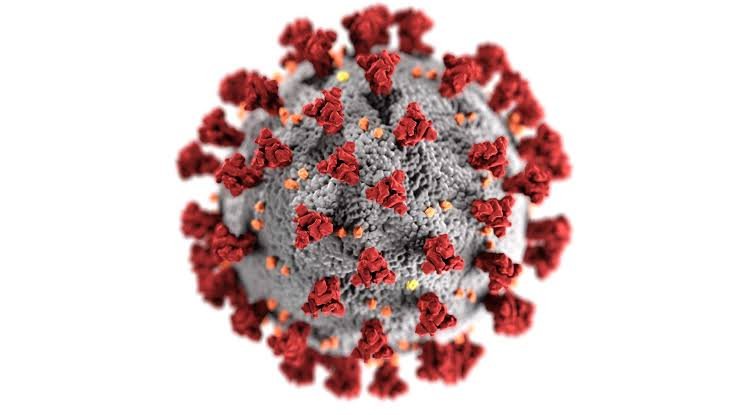
Gaurav Kumar Bansal vs. Union of India (UOI) and Ors. (04.10.2021 – SC): MANU/SC/0861/2021 Background: The Supreme Court in this case directed the National Disaster Management Authority to recommend guidelines for ex gratia assistance on account of loss of life to the family members of the persons who died due to Covid-19, as mandated under Section 12(iii) of DMA 2005 for the minimum standards of relief to be provided to the persons affected by disaster – Covid 19 Pandemic, over and above the guidelines already recommended for the minimum standards of relief to be provided to persons affected by Covid-19. GUIDELINES:● The Authority recommends an ex-gratia payment to next of kin of the deceased due to COVID-19, subject to cause of death being certified as COVID-19 as per the guidelines issued by MOHFW and ICMR. ● Amount of ex-gratia payment: The Authority recommends an amount of Rs. 50,000/ (Fifty thousand only) per deceased person including those involved in relief operations or associated in preparedness activities, subject to cause of death being certified as COVID-19. With regards to such certification, and redressal of any grievances regarding the same, guidelines issued by MOHFW and ICMR on 3rd September 2021, and referred to in Para 2 above, will be applicable. ● Source of funds: The ex-gratia assistance shall be provided by States from the State Disaster Response Fund (SDRF). ● Disbursement: The District Disaster Management Authority (DDMA)/ district administration would disburse the ex-gratia assistance to the next of kin of the deceased persons. The concerned families will submit their claims through a form issued by State Authority along with specified documents including the death certificate that certifies the cause of death to be COVID-19, The DDMA will ensure that the process of claim, verification, sanction, and the final disbursement of ex-gratia payment will be through a robust yet simple and people-friendly procedure. All claims must be settled within 30 days of submission of required documents, and disbursed through Aadhaar linked Direct Benefit Transfer procedures. ● Grievance redressal: in case of any grievances with regards to certification of the death, as prescribed in the MOHFW and ICMR guidelines mentioned above a Committee at district level consisting of Additional District Collector, Chief Medical Officer of Health (CMOH), Additional CMOH/ Principal or HOD Medicine of a Medical College (if one existing the district) and a subject expert, will propose necessary remedial measures, including Issuance of amended Official Document for COVID-19 death after verifying facts in accordance with these guidelines. In case the decision of the Committee is not in favour of the claimant, a clear reason for the same shall be recorded. ● Continuous scheme: The Ex-Gratia assistance to families affected by COVID-19 deaths will continue to be provided for deaths that may occur in the future phases of the COVID-19 pandemic as well, or until further notification.
Guidelines to be followed in the matters of investigating police encounters in the cases of death as the standard procedure for thorough, effective and independent investigation
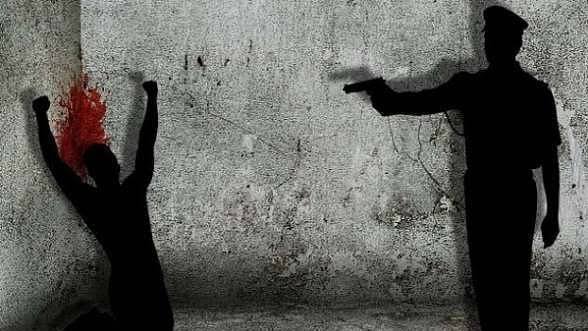
People’s Union for Civil Liberties & Anr. vs State of Maharashtra & Ors, CRIMINAL APPEAL NO.1255 OF 1999, (2014) 10 SCC 635. Background: The case was filed to question the genuineness of nearly 99 encounters between the Mumbai police and the alleged criminals resulting in the death of about 135 persons between 1995 and 1997. GUIDELINES: (1) Whenever the police are in receipt of any intelligence or tip-off regarding criminal movements or activities pertaining to the commission of grave criminal offence, it shall be reduced into writing in some form (preferably into case diary) or in some electronic form.Such recording need not reveal details of the suspect or the location to which the party is headed. If such intelligence or tip-off is received by a higher authority, the same may be noted in some form without revealing details of the suspect or the location. (2) If pursuant to the tip-off or receipt of any intelligence, as above, encounter takes place and firearm is used by the police party and as a result of that, death occurs, an FIR to that effect shall be registered and the same shall be forwarded to the court under Section 157 of the Code without any delay. While forwarding the report under Section 157 of the Code, the procedure prescribed under Section 158 of the Code shall be followed. (3) An independent investigation into the incident/encounter shall be conducted by the CID or police team of another police station under the supervision of a senior officer (at least a level above the head of the police party engaged in the encounter). The team conducting inquiry/investigation shall, at a minimum, seek:(a) To identify the victim; colour photographs of the victim should be taken;(b) To recover and preserve evidentiary material, including blood-stained earth, hair, fibers and threads, etc., related to the death;(c) To identify scene witnesses with complete names, addresses and telephone numbers and obtain their statements (including the statements of police personnel involved) concerning the death;(d) To determine the cause, manner, location (including preparation of rough sketch of topography of the scene and, if possible, photo/video of the scene and any physical evidence) and time of death as well as any pattern or practice that may have brought about the death;(e) It must be ensured that intact fingerprints of the deceased are sent for chemical analysis. Any other fingerprints should be located, developed, lifted and sent for chemical analysis;(f) Post-mortem must be conducted by two doctors in the District Hospital, one of them, as far as possible, should be In-charge/Head of the District Hospital. Post-mortem shall be video-graphed and preserved;(g) Any evidence of weapons, such as guns, projectiles, bullets and cartridge cases, should be taken and preserved. Wherever applicable, tests for gunshot residue and trace metal detection should be performed.(h) The cause of death should be found out, whether it was natural death, accidental death, suicide or homicide. (4) A Magisterial inquiry under Section 176 of the Code must invariably be held in all cases of death which occur in the course of police firing and a report thereof must be sent to Judicial Magistrate having jurisdiction under Section 190 of the Code. (5) The involvement of NHRC is not necessary unless there is serious doubt about independent and impartial investigation. However, the information of the incident without any delay must be sent to NHRC or the State Human Rights Commission, as the case may be. (6) The injured criminal/victim should be provided medical aid and his/her statement recorded by the Magistrate or Medical Officer with certificate of fitness. (7) It should be ensured that there is no delay in sending FIR, diary entries, panchnamas, sketch, etc., to the concerned Court. (8) After full investigation into the incident, the report should be sent to the competent court under Section 173 of the Code. The trial, pursuant to the chargesheet submitted by the Investigating Officer, must be concluded expeditiously. (9) In the event of death, the next of kin of the alleged criminal/victim must be informed at the earliest. (10) Six monthly statements of all cases where deaths have occurred in police firing must be sent to NHRC by DGPs. It must be ensured that the six-monthly statements reach to NHRC by 15th day of January and July, respectively. The statements may be sent in the following format along with post mortem, inquest and, wherever available, the inquiry reports:(i) Date and place of occurrence.(ii) Police Station, District.(iii) Circumstances leading to deaths:(a) Self-defence in encounter.(b) In the course of dispersal of unlawful assembly.(c) In the course of affecting arrest.(iv) Brief facts of the incident.(v) Criminal Case No.(vi) Investigating Agency.(vii) Findings of the Magisterial Inquiry/Inquiry bySenior Officers:(a) disclosing, in particular, names and designation of police officials, if found responsible for the death; and(b) whether use of force was justified and action taken was lawful. (11) If on the conclusion of investigation, the materials/evidence having come on record show that death had occurred by use of firearm amounting to offence under the IPC, disciplinary action against such officer must be promptly initiated and he be placed under suspension. (12) As regards compensation to be granted to the dependants of the victim who suffered death in a police encounter, the scheme provided under Section 357-A of the Code must be applied. (13) The police officer(s) concerned must surrender his/her weapons for forensic and ballistic analysis, including any other material, as required by the investigating team, subject to the rights under Article 20 of the Constitution. (14) An intimation about the incident must also be sent to the police officer’s family and should the family need services of a lawyer / counselling, same must be offered. (15) No out-of-turn promotion or instant gallantry rewards shall be bestowed on the concerned officers soon after the occurrence. It must be ensured at all costs that such rewards are given/recommended only when the gallantry of the concerned officers is established beyond doubt. (16) If the family of the victim finds that the above procedure
The Supreme Court’s Guidelines on preventing mob lynching
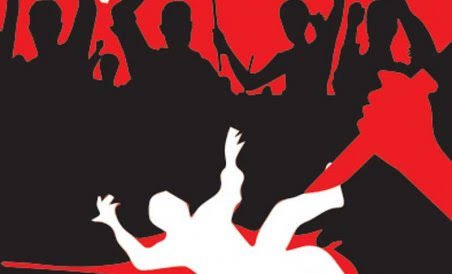
Tehseen S. Poonawalla vs Union of India, WRIT PETITION (CIVIL) NO. 754 OF 2016, (2018) SCC OnLine SC 696. Background: In this case the petitioner, a social activist, had preferred a writ petition under Article 32 of the Constitution for commanding the respondent State Nos. 3 to 8 to take immediate and necessary action against the cow protection groups indulging in violence; and further to issue a writ or direction to remove the violent contents from the social media uploaded and hosted by the said groups. GUIDELINES: A. Preventive Measures (i) The State Governments shall designate, a senior police officer, not below the rank of Superintendent of Police, as Nodal Officer in each district. Such Nodal Officer shall be assisted by one of the DSP rank officers in the district for taking measures to prevent incidents of mob violence and lynching. They shall constitute a special task force so as to procure intelligence reports about the people who are likely to commit such crimes or who are involved in spreading hate speeches, provocative statements and fake news. (ii) The State Governments shall forthwith identify Districts, Sub-Divisions and/or Villages where instances of lynching and mob violence have been reported in the recent past, say, in the last five years. The process of identification should be done within a period of three weeks from the date of this judgment, as such time period is sufficient to get the task done in today’s fast world of data collection. (iii) The Secretary, Home Department of the concerned States shall issue directives/advisories to the Nodal Officers of the concerned districts for ensuring that the Officer In-charge of the Police Stations of the identified areas are extra cautious if any instance of mob violence within their jurisdiction comes to their notice. (iv) The Nodal Officer, so designated, shall hold regular meetings (at least once a month) with the local intelligence units in the district along with all Station House Officers of the district so as to identify the existence of the tendencies of vigilantism, mob violence or lynching in the district and take steps to prohibit instances of dissemination of offensive material through different social media platforms or any other means for inciting such tendencies. The Nodal Officer shall also make efforts to eradicate hostile environment against any community or caste which is targeted in such incidents. (v) The Director General of Police/the Secretary, Home Department of the concerned States shall take regular review meetings (at least once a quarter) with all the Nodal Officers and State Police Intelligence heads. The Nodal Officers shall bring to the notice of the DGP any inter-district co-ordination issues for devising a strategy to tackle lynching and mob violence related issues at the State level. (vi) It shall be the duty of every police officer to cause a mob to disperse, by exercising his power Under Section 129 of Code of Criminal Procedure, which, in his opinion, has a tendency to cause violence or wreak the havoc of lynching in the disguise of vigilantism or otherwise. (vii) The Home Department of the Government of India must take initiative and work in co-ordination with the State Governments for sensitising the law enforcement agencies and by involving all the stake holders to identify the measures for prevention of mob violence and lynching against any caste or community and to implement the constitutional goal of social justice and the Rule of Law.(viii) The Director General of Police shall issue a circular to the Superintendents of Police with regard to police patrolling in the sensitive areas keeping in view the incidents of the past and the intelligence obtained by the office of the Director General. It singularly means that there should be seriousness in patrolling so that the anti-social elements involved in such crimes are discouraged and remain within the boundaries of law thus fearing to even think of taking the law into their own hands. (ix) The Central and the State Governments should broadcast on radio and television and other media platforms including the official websites of the Home Department and Police of the States that lynching and mob violence of any kind shall invite serious consequence under the law. (x) It shall be the duty of the Central Government as well as the State Governments to take steps to curb and stop dissemination of irresponsible and explosive messages, videos and other material on various social media platforms which have a tendency to incite mob violence and lynching of any kind. (xi) The police shall cause to register FIR Under Section 153A of Indian Penal Code and/or other relevant provisions of law against persons who disseminate irresponsible and explosive messages and videos having content which is likely to incite mob violence and lynching of any kind (xii) The Central Government shall also issue appropriate directions/advisories to the State Governments which would reflect the gravity and seriousness of the situation and the measures to be taken. B. Remedial Measures (i) Despite the preventive measures taken by the State Police, if it comes to the notice of the local police that an incident of lynching or mob violence has taken place, the jurisdictional police station shall immediately cause to lodge an FIR, without any undue delay, under the relevant provisions of Indian Penal Code and/or other provisions of law.(ii) It shall be the duty of the Station House Officer, in whose police station such FIR is registered, to forthwith intimate the Nodal Officer in the district who shall, in turn, ensure that there is no further harassment of the family members of the victim(s).(iii) Investigation in such offences shall be personally monitored by the Nodal Officer who shall be duty bound to ensure that the investigation is carried out effectively and the charge-sheet in such cases is filed within the statutory period from the date of registration of the FIR or arrest of the Accused, as the case may be.(iv) The State Governments shall prepare a lynching/mob violence victim compensation scheme in the light
Guidelines with respect to Pet & Street Dogs, and their Care-Givers, and for Residents’ Welfare Associations and Apartment Owners Associations
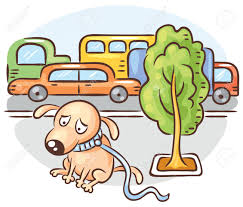
Background: The Animal Welfare Board of India is a statutory body established in terms of Section 4 of the Prevention of Cruelty to Animals Act. This Advisory is being issued in pursuance of Section 9 (k) of the said Act which deals with imparting education in relation to the humane treatment of animals and to encourage the formation of public opinion against the infliction of unnecessary pain or suffering to animals and for the promotion of animal welfare by means of lectures, books, posters, cinematographic exhibitions and the like; The following guidelines were issued by The Animal Welfare Board of India through notification dated 26th February, 2015 GUIDELINES: ● As the number of people keeping dogs as household companions is increasing, and as animal lovers / activists are increasingly showing compassion for street dogs by feeding them, and providing veterinary and other support, conflicts may sometimes occur between pet owners and the care-givers of street dogs, on the one hand, and Resident Welfare Associations and Apartment Owners Associations on the other hand. ● Our country endorses the virtues of ahimsa and non-violence and these doctrines have always enabled people to peacefully co-exist with animals. Moreover, the duty to show compassion to all living creatures is a fundamental duty cast by Article 51A(g) of the Constitution upon all citizens of this country and the law of the land protects the rights of non-humans. ● All points of view deserve consideration, and everybody is equal in the eyes of the law. The solution therefore lies in recognizing that, and treating differing points of view, and differing life-styles with respect. These Guidelines aims at achieving that. Guidelines for Pet Owners: 1. Pet owners rightly consider their pets as family members. A pet is akin to a perennial toddler and therefore deserves the same attention throughout its life as that reserved for a human toddler during infancy. However, pet owners are advised to ensure that their pets are not a source of nuisance to others. In doing so, they may, however, distinguish between reasonable and unreasonable, and lawful and unlawful claims as to their pets being a source of nuisance; and no amount of pressure should lead to an abandonment of a pet animal. Doing so is a violation of law. 2. Barking is a natural form of expression for a dog, and must and has to be tolerated in a society. However, incessant barking can disturb neighbors. Hence, pet owners are advised to make every effort to keep their dogs quiet, particularly during night hours. 3. Pet owners are advised to ensure that their pets are healthy, and clean. Adequate healthcare and regular vaccinations need be ensured. Sterilization is advised as our country has excessive dog population. 4. Pet owners, or the other care givers or dog walkers they entrust their pets to, are advised to either clean up when the pet defecates in public premises, or participate in other solutions for maintaining cleanliness. Such civic sense is the need of the hour in our country, and it is also a courtesy to other users of public spaces. Pet owners are advised to take the initiative to discuss with their RWAS, ways and means to dispose off pet excreta. For instance, pet corners can be designated, in which pets can be trained / encouraged to relieve themselves; and a corner of the complex / park can be designated as area where pet poop can be collected and deposited and composted, using sawdust, etc. Such behavior may generate positivity, and greater acceptability of pet dogs, and even street dogs. However, it is clarified that it is for each residential community and complex to decide which method works best for them, and solutions cannot be imposed on anybody. 5. Leashing of pets in public places is advisable. Leashing of dogs assures passersby that they are safe and makes them more comfortable when walking in the vicinity of an owner with his pet dog on a leash. Leashing also ensures the safety of the pet from being run over by vehicles on streets, or worse still, being the cause of accidents. 6. Whereas you cannot be debarred by RWAs or Apartment Owners’ Associations from the use of lifts or elevators for your dogs, you are advised not to object to the use of ‘alternate’ lifts if there is more than one working lift or elevator in a building, which is conveniently accessible. Guidelines for Care-givers of Street Dogs: 1. There are many people in India who feed stray and ownerless animals. Some dispose off their leftover food in this manner, and others compassionately prepare food for them. Those who feed street dogs are advised to participate in their sterilization, and yearly vaccination too, since they win the trust of the dogs through feeding them. They are also advised to provide, or to assist animal welfare organizations in providing health care to them. 2. Care-givers are advised not to feed street dogs close to residences not their own. They are also advised to avoid feeding street dogs immediately adjacent to areas in which children play, or people take walks, or that are otherwise crowded. Moreover, feeding must not be done in a manner that contributes to littering, or dirtying any feeding site. Care-givers are advised to clean up feeding sites after feeding is over. 3. Care-givers are advised to keep the sterilization and vaccination status of the dogs they are feeding and caring for, updated and readily accessible. Sharing the same with their resident’s welfare associations or other residents, generate positivity, and greater acceptability of the dogs. 4. Care-givers cannot control the defecation habits of the strays. However, they are advised to participate in other solutions for maintaining cleanliness. II. WITH RESPECT TO STREET DOGS: 1) Beating and driving away street dogs. is NOT ALLOWED; animal birth control and release back into same locality/territory, is ALLOWED: As per Indian law street dogs (i.e., stray dogs) cannot be beaten or driven away or dumped elsewhere or killed.
